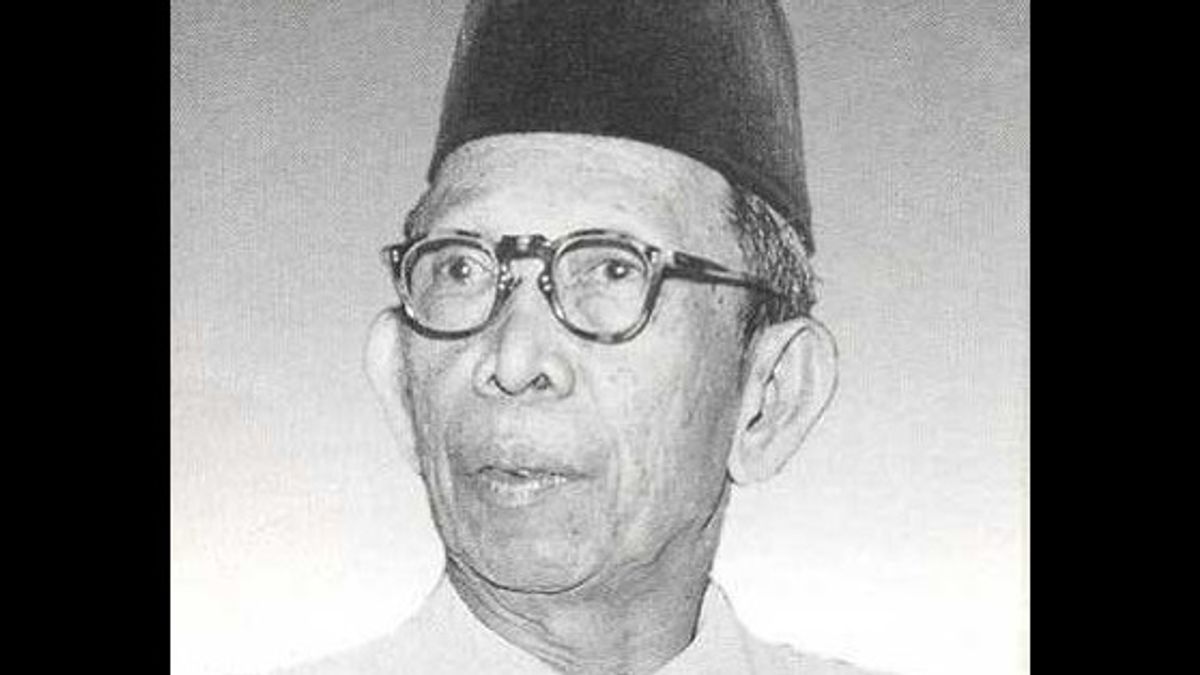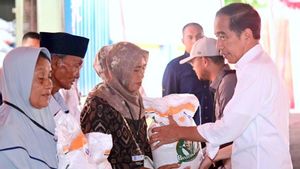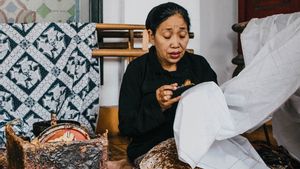
JAKARTA - Indonesia has a long history of music. The presence of various musical instruments in the reliefs of Borobudur Temple since the 8th century is one of the proofs of music is the high majesty of ancestral civilization. That spirit is understood by Ki Hajar Dewantara. For him, music is related to many things: political, religious, social, and cultural, as well as a tool to liberate the nation from the shackles of colonialism.
It was the Dutch ethnomusicologist, Jaap Kunst (1891-1960) who played a major role in making Indonesian music known to the world. He was a pioneer who recorded the names of hundreds of Indonesian musical instruments. The man who was born in Groningen collected them from Old Javanese manuscripts. Every musical instrument he recorded was always given a long explanation about the period when the instruments were first present in the midst of the Bumiputras.
Meanwhile, to get an idea of the forms of musical instruments, Jaap Kunst learned a lot from the sculptures on the walls of Borobudur Temple. For Jaap Kunst the reliefs of Borobudur are like a book. The reliefs seem to be able to describe knowledge of the past, especially related to music.

The styles of musical instruments found by Jaap Kunst are not only typical of the archipelago, because many of them have similarities with musical instruments in India, and other parts of the world. If detailed, the 200 reliefs of Borobudur Temple which are located on 40 panels display 60 types of musical instruments. Each musical instrument is of a type: string, wind, beat, and membrane.
“More than 200 reliefs located on 40 panels displaying 60 types of musical instruments have shown that musical activity in that place, 13 centuries ago, has so far not been found elsewhere. Uniquely, most of the musical instruments (on the reliefs) are no longer found in Java. However, it was found that it was found in 34 provinces in Indonesia and even found similarities in 40 other countries,” said the Maestro Musik Indonesia and one of the initiators of Sound of Borobudur, Purwatjaraka.
Some of them are Ranat Ek (Thailand), Balafon (Gabon), Marimba (Congo/Tanzania), Garantung (Indonesia), Mridagam (India), Ghatam (India), Udu (Nigeria), Bo (China), Bhusya (Nepal ), Darbuka (Egypt), Tifa (Indonesia), Small Djembe (Mali/West Africa), Traditional Drum (Sri Lanka), Muzavu (Tamil), African Drums, Tabla (India), Kendang (Indonesia), Conga (Latin America) , Pipa (China), Setar (Iran), Oud (Saudi Arabia), Biwa (Japan), Lute (English), Ud (Turkey), to Bowed String (Italy).
There are also Dombra (Kazakhstan), Saung Gauk (Myanmar), Ngobi (Algeria), Sakota Yazh (Tamil), Kora (Gambia), Ekidongo (Uganda), Harp, Zeze/Lunzenze (Kenya), One String Zither (Peru), Kse Diev (Cambodia), Kwere (Tanzania), Sheng (China), Saenghwang (Korea), Keledik/Kedire (Indonesia), Sape' (Indonesia), Shio (Japan), Traditional Flute (Europe), Bansuri (India), Medieval Flute (Germany), Daegum (Korea), and Flute or flute (Indonesia).

Musical instruments in the reliefs of Borobudur Temple (Source: Dutch Volkenkunde Museum)
Anthropologist from Makassar State University, Dimas Ario Supick agrees with this opinion. According to him, the presence of carvings of various musical instruments on the reliefs of Borobudur Temple does not change the way the nation's ancestors showed the majesty, fame, and high civilization of their time. For that, it is not wrong if the echo of Borobudur as the center of world music has been worldwide since time immemorial. Realized or not.
The Yogyakarta-born anthropologist added that when a nation begins to balance between ethical and aesthetic levels, it can be identified with progress and prosperity. Which, progress is in the form of a diversity of musical instruments and the technology of making musical instruments. Take for example, the presence of gamelan instruments that already use extraordinary metallurgical technology. That is, since that time – the 9th century – the nation's ancestors have been able to think beyond their time.
"The musical instruments carved there show that at that time civilization had triumphed not only in upholding ethics, but demanding at the aesthetic level. The musical instruments found in the relief sculptures at Borobudur Temple show the diversity and richness of musical instruments that are known, used, and enjoyed by the community in their way of life," said Dimas Ario Suelek, to VOI, September 14.
Ki Hajar Dewantara and music
Soewardi Soerjaningrat or better known as Ki Hajar Dewantara is not only known as the Father of National Education. During his lifetime, he was known to be active in giving sharp criticisms to the Dutch East Indies colonial government.
Even one of his criticisms through the writing "Als ik een Nederlander was" or "If I were a Dutchman" made him exiled to the Land of the Windmills. It was there that the radical Soewardi began to change the direction of his movement. He chose to fight through aspects of education and culture, especially music. Moreover, music is a reflection of the progress of the bumiputras since time immemorial.
After that, Soewardi founded the Taman Siswa College in 1922. Also the Javanese Prince Raden Mas Soewardi Soerjaningrat who later gave birth to the name Ki Hajar Dewantara (the intermediary teacher of gods) as a form of relinquishing his nobility in 1927. One of the things he instilled in Taman Siswa was music as a tool for against, to liberate the Indonesian nation.
“At that time, colonial society and Europe considered the music of the colonized as low culture or 'uncivilized'. Ki Hadjar felt the need to put up a fight in this context. If Western classical music is seen as the latest-sophisticated music, then it tries to adopt the concepts behind it to be applied to Javanese music, gamelan," wrote Ethnomusicologist Aris Setiawan in his writings in the People's Sovereignty Daily entitled Ki Hadjar and Nationalism Music (2018).
Day by day, Ki Hajar Dewantara is getting more and more intense in revealing the philosophical values in traditional gamelan music. He views gamelan as a reflection of the identity of the people who are refined in character. As a form of movement, he then changed the gamelan display format to become more modern, exclusive, and parlente. Gamelan players began to wear suits, ties, shoes, like Western music players. Through traditional music, Ki Hajar Dewantara wanted to talk about equality.
In his hands, music is no longer interpreted as sound. But as a form of resistance and criticism. Music is transformed into spaces that inscribe human values to independence. He then used music as a means of resistance that would undermine European cultural hegemony through Dutch colonialism in the archipelago. As a result, the natives became aware that there was nothing different between them and the Europeans. Everything is equal.
“In doing so, Ki Hajar Dewantara, turned music into – to use Wallerstein's term – an ideological battlefield, treating music as a political narrative against colonial power. Thanks to that, he was able to speak to Europeans as subjects who control their own narratives, not merely as objects of European orientalism. It is only in this mental attitude that Europeans will be able to pay attention to, and become aware of, the problems of Dutch colonialism,” concluded R. Franki S. Noto Sudirdjo in the book Reflecting on Echoes: The Indonesian-Dutch Musical Encounter (2016).
The most obvious example of Ki Hajar Dewantara's view is not only in the corridors of traditional Gamelan music. But penetrated in other music. Laying the foundation of nationalism through the Youth Pledge in 1928, for example.
In that historic moment, it was not only the pledge of one nation, one homeland, one language, namely Indonesia. Wage Rudolf Soepratman's song, Indonesia Raya, became a tool to free the nation.
“Reinforced by Indonesia Raya, the national anthem composed in a western musical idiom by Wage Rudolf Soepratman, this declaration becomes a very strong practice of aspirations and a symbol of unity. The success of the Youth Pledge and Indonesia Raya shows us that nationalism stems from a combination of political legitimacy and emotional power.”
“Thus, music, and more broadly the performing arts play an important role in spreading national identity. Oftentimes, performing arts serve as an important means of evoking a sense of unity,” concluded Sumarsam, an important figure who perpetuates the history of Gamelan, Sumarsam in the book Meaning of Wayang and Gamelan: Intersection of Crosses of Java, Islam, and Global (2018).
*Read other information about MUSIC or read other interesting articles from Detha Arya Tifada.
Other MEMORIESThe English, Chinese, Japanese, Arabic, and French versions are automatically generated by the AI. So there may still be inaccuracies in translating, please always see Indonesian as our main language. (system supported by DigitalSiber.id)











